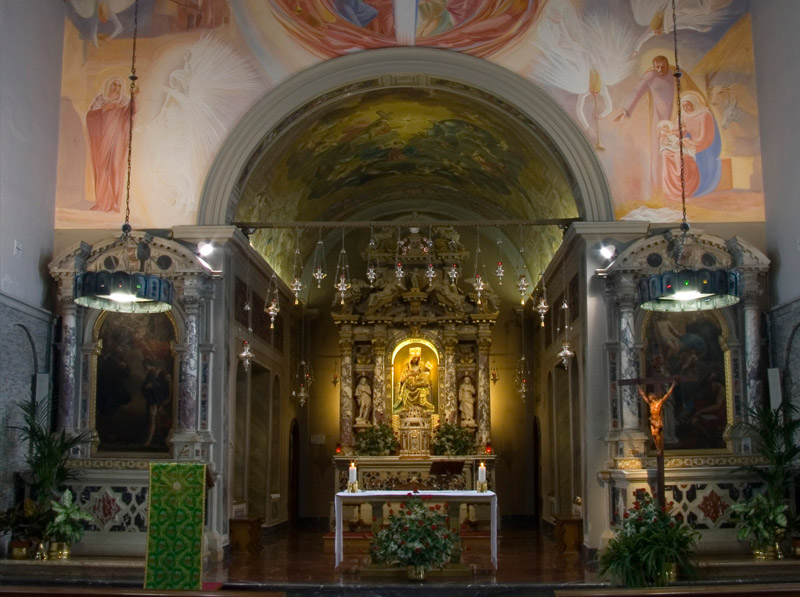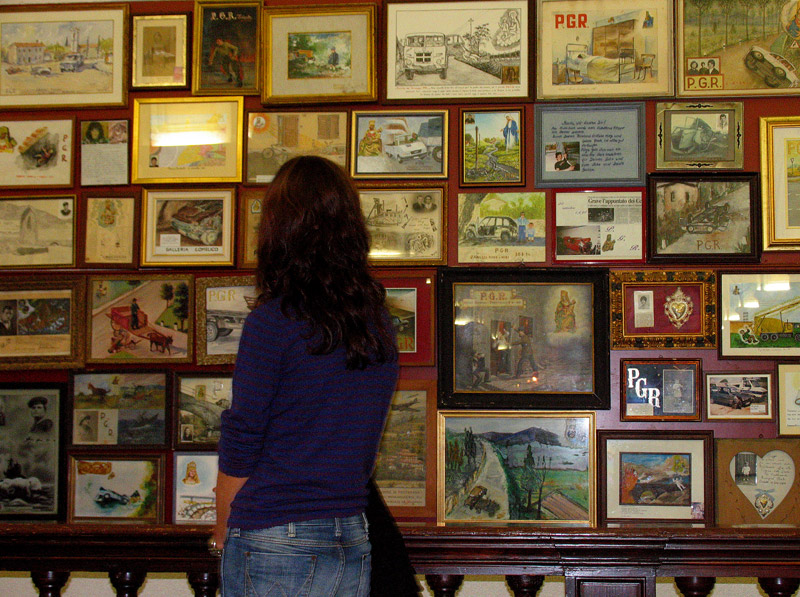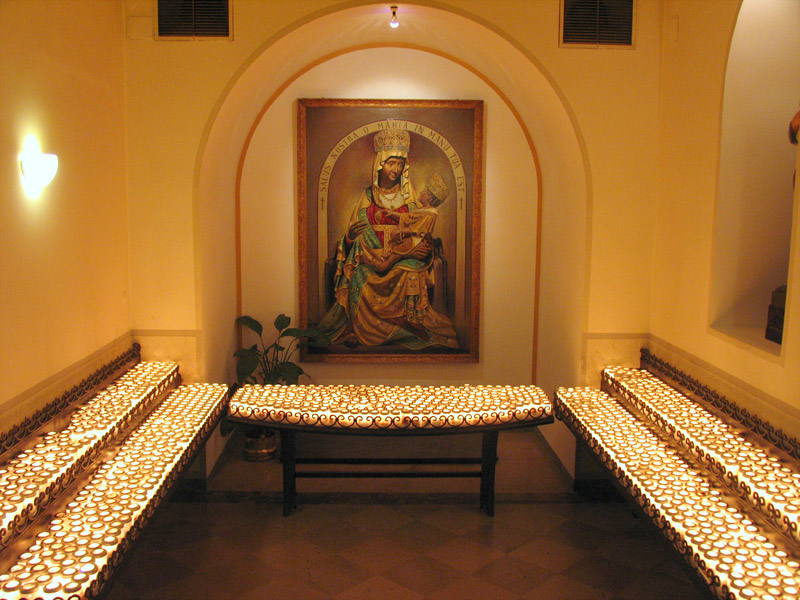
In the presbytery, the high altar is from 1684, the work of Venetian masters. The current tabernacle in the shape of a small temple dates from 1921. In the vault of the presbytery there is a fresco of the Virgin Mary "Assunta at the foot of the Trinity", by Lorenzo Bianchini dating back to 1870. In 1884 retouches were made and the ornamental part was added. The circular window behind the altar was also enlarged.
The side altars are from 1687, again of Venetian origin. On the right altar, you can see the altarpiece with S. Antonio and S. Vito under the three angels, one of which with chalice and wafer in hand. Work executed by Francesco Chiarottini in 1767. On the left, the altar of the Holy Trinity with St. Gregory and St. Jerome, by an uncertain author.

Already in 1625 the Patriarch of Aquileia Antonio Grimani, visiting the sanctuary, marveled at the quantity of images and signs hanging on the walls. Unfortunately, over the centuries these signs of gratitude to the Virgin have also been the subject of thefts and robberies. The most important votive offering that has come down to us is the one offered by the city of Gemona del Friuli in 1576. It was commissioned following the liberation of the city from the plague and made in silver by Giovanni Battista Paduan from Belluno. On the walls of the central nave of the sanctuary you can admire the oldest votive offerings, generally painted on wood.
It is the oldest part of the sanctuary and the first place of worship. Originally of modest dimensions, it was enlarged in 1954 up to the second arch, and in 1962 until it reached its current size.
During the expansion works, at the level of the second columns and about halfway up between the floor and the ceiling, two rooms paved in 'opus signinum' were discovered, dating back to Roman times and in any case no later than the 6th century. The hypotheses on the ancient origin of the sanctuary are based on these findings, which already tradition and various historical hypotheses date back to the 5th and 6th centuries. In the crypt there are remains of the Roman pavement and fragments of grenades that hit the sanctuary during the Second World War and which forced the friars and the inhabitants of the village to take refuge there.
The frescoes in the crypt appear to be attributable to Giovanni da Udine. On the walls are still visible writings of ancient pilgrims. The oldest is: '1559 - Gaspar Belinus', but many others are clearly visible.
It is difficult to establish when and why the crypt was dedicated to St. Michael the Archangel. It is known that he was an angel particularly dear to the faith of the Lombards. The wooden group "St. Michael the Archangel crushing the Devil" is from 1963: it reproduces an identical group that has existed for centuries and has been remade several times.
